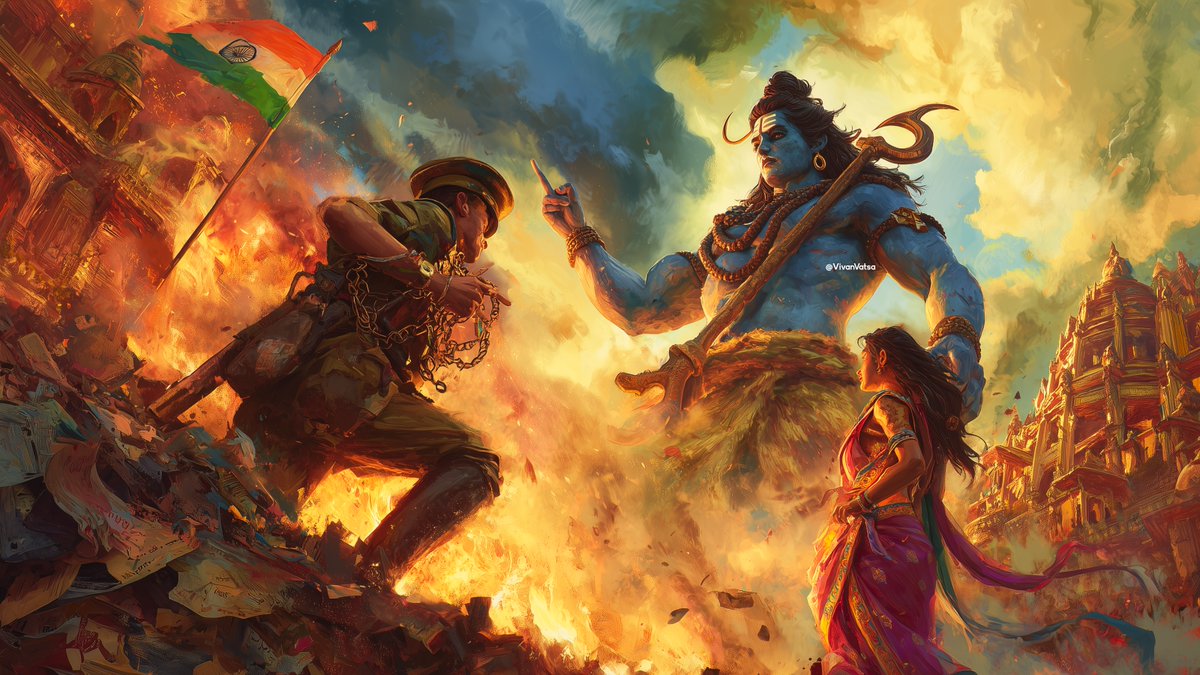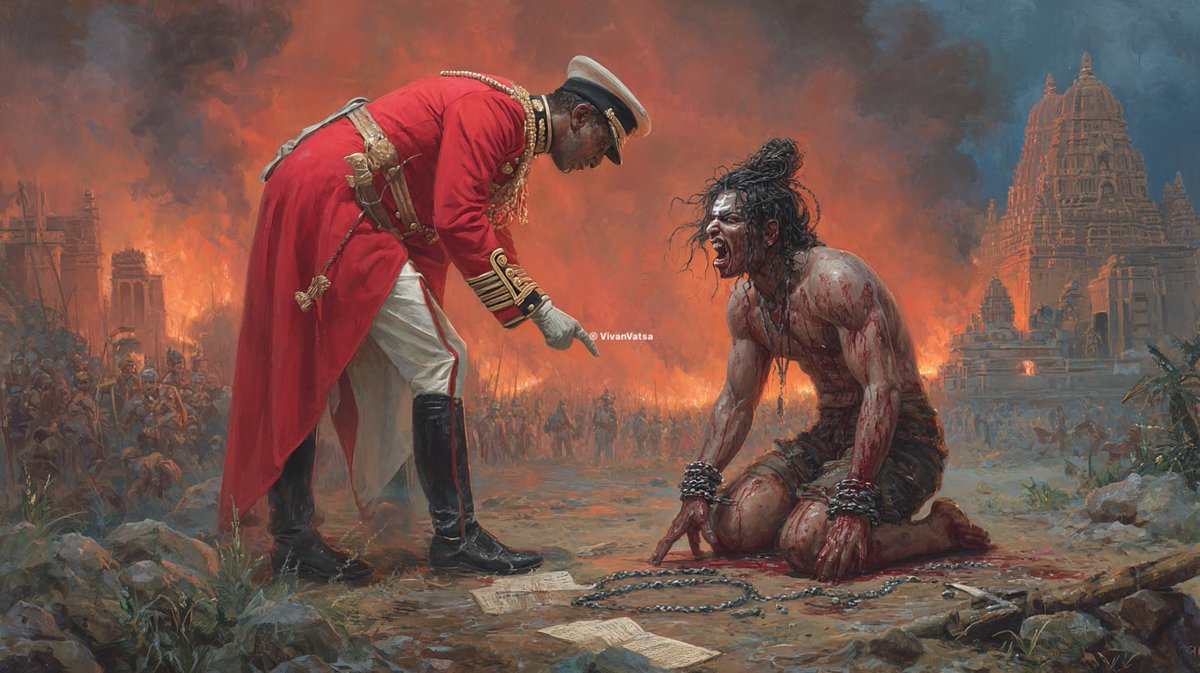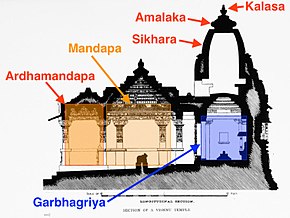When Bhagwan Shiva FOUGHT with his wife Parvati Ji, he started doing strange ‘Gestures’ with his hands & legs in ANGER.
All Devtas-Asurs got SCARED; No one had ever seen this kind of RAW power unleashed.
This is how India’s most divine Art form began with Shiv Ji’s “Mudras”…
All Devtas-Asurs got SCARED; No one had ever seen this kind of RAW power unleashed.
This is how India’s most divine Art form began with Shiv Ji’s “Mudras”…

Nataraja. Mahadeva.
Adiyogi. Bholenath.
Bhagwan Shiva, The Shunya (0) and Ekaiyi (1) of the universe.
This is the story of how Mahadev’s Tandava and gestures done in that rage gave birth to the universe, and what powers does “Mudras” hold in Sanatan Dharma…
Adiyogi. Bholenath.
Bhagwan Shiva, The Shunya (0) and Ekaiyi (1) of the universe.
This is the story of how Mahadev’s Tandava and gestures done in that rage gave birth to the universe, and what powers does “Mudras” hold in Sanatan Dharma…

Tandava.
Shiv Ji’s divine dance of power & grace. Beholds the entire rhythm of the cosmos. Tandava is not just a physical dance; it is a metaphysical expression of the universe's eternal cycle. Every gesture in the Tandava carries deep symbolic meaning.
Shiv Ji’s divine dance of power & grace. Beholds the entire rhythm of the cosmos. Tandava is not just a physical dance; it is a metaphysical expression of the universe's eternal cycle. Every gesture in the Tandava carries deep symbolic meaning.

“Mudras” hold the expressions of Shiv Ji’s divine emotions—his anger, rage, compassion, and ultimate dissolution of the cosmos. The mudras performed by Shiv Ji are not random gestures but are spiritual traditions of Sanatan Dharma, each with its own significance and purpose. 



Mudras are Hindu spiritual practices, are symbolic hand gestures that are used to channel divine energy and express specific intentions. These gestures are an essential part of classical Indian dance, yoga, and rituals. 

What can’t be conveyed in words, these Mudras are the medium to convey emotions & tell stories. In yoga, mudras are employed to direct the flow of prana, or life energy, within the body, promoting physical and mental well-being. 







The ancient sages and yogis recognized the power of these gestures and incorporated them into their rituals and meditations. The mudras are believed to connect the practitioner with the divine, allowing them to tap into the cosmic energy that pervades the universe. 







Shiv Ji as Nataraja, uses mudras to express the various aspects of the universe and its functions. The Tandava encompasses the five activities of the cosmos: creation (srishti), preservation (sthiti), destruction (samhara), concealment (tirobhava), and grace (anugraha). 

Each of these activities is symbolized by a specific mudra in Shiv Ji’s dance. For eg: Abhaya Mudra, where Shiv Ji raises right hand with palm facing outward, symbolizes protection & dispelling fear. This mudra reassures devotees that they are under the protection. 

Another significant mudra is the Damaru Mudra, where Shiv Ji holds a small drum (damaru) in his hand. The damaru is a symbol of creation, representing the sound of the universe. The sound produced by the damaru during the Tandava is believed to be the source of the primordial sound AUM, which is the sound of creation itself.
This mudra symbolizes the creation of the universe and the beginning of time.
This mudra symbolizes the creation of the universe and the beginning of time.

The Gaja Hasta Mudra, where Shiv Ji’s hand mimics the trunk of an elephant, represents the removal of obstacles. This mudra is often associated with Ganapati, Shiv Ji’s son, who is the remover of obstacles and the deity of beginnings. The Gaja Hasta Mudra in the context of the Tandava signifies the clearing of the old to make way for the new, aligning with the themes of destruction and renewal that are central to Shiv Ji’s dance.



Each mudra affects the flow of prana, the life force, within the body, and can influence both physical and mental states. The fingertips, which are used to form the mudras, are considered to be the endpoints of energy channels (nadis) in the body. By positioning the fingers in specific ways, the practitioner can influence the flow of energy and bring about balance and harmony within the body and mind.

In Hindu history, there are numerous mudras, each with its own unique significance. It is said that there are 108 primary mudras, a number that holds special significance in Hinduism, symbolizing the completeness of the universe. These mudras are used in various contexts, from classical dance and yoga to religious rituals and meditation. Each mudra is a key to unlocking specific aspects of divine energy and connecting with different manifestations of the divine.

Shiv Ji’s relationship with mudras is deep and intrinsic. As the cosmic dancer, he uses these gestures not only to express his emotions and intentions but also to communicate with the universe. The mudras are a language of the divine, a way for Shiv Ji to convey his message to the cosmos and to those who worship him.

One of the most famous stories associated with Shiv Ji and his epic power of Mudra within Tandava is the story of his confrontation with his wife, Parvati, which led him to perform the Tandava and create the universe. It’s said that Shiv Ji and Parvati once had a disagreement that escalated into a fierce argument. In his anger and frustration, Shiv Ji began to perform the Tandava, the dance of destruction. As he danced, his anger and rage were expressed through the powerful mudras that he performed.

Each mudra was a reflection of his divine emotions, channeling his energy into the destruction of the old and the creation of the new. As Shiv Ji continued to dance, the intensity of his mudras increased, and the universe began to shake and tremble. The other gods and asuras, witnessing the destructive power of Shiv Ji’s dance, became concerned that the entire cosmos would be destroyed. They approached Parvati and pleaded with her to calm Shiv Ji and bring an end to the Tandava.

Parvati, recognizing the gravity of the situation, joined Shiv Ji in his dance. Her presence and her own graceful mudras balanced Shiv Ji’s rage, and together, they brought harmony to the universe. The dance of Tandava, with its combination of Shiv Ji’s powerful mudras and Parvati’s gentle gestures, symbolizes the balance of energies in the cosmos—the masculine and the feminine, the destructive and the creative.



Mudras are an integral part of Hindu rituals, meditation practices, and daily worship. They are used to invoke the presence of the divine, to consecrate offerings, and to focus the mind during meditation. The practice of using mudras is seen as a way to connect with the divine on a deeper level, to align one’s own energy with the cosmic energy, and to bring about spiritual growth and transformation.

For Hindus around the world, the practice of using mudras is a way to connect with the divine, to express devotion, and to channel spiritual energy. The mudras are a bridge between the physical and the spiritual, a way to bring the divine into the everyday actions of life. Whether used in dance, yoga, or rituals, the mudras are a powerful tool for spiritual growth and transformation, allowing the practitioner to tap into the cosmic energy that flows through the universe and to connect with the divine on a deeper level.



Indian history is filled with such grand stories, never to be forgotten.
We @iKyu_HQ worship the delicacy of history in India and stand to flourish it to the world...
Our handKrafted documentary-style breakdowns are ready!
Experience us at ikyu.ink
We @iKyu_HQ worship the delicacy of history in India and stand to flourish it to the world...
Our handKrafted documentary-style breakdowns are ready!
Experience us at ikyu.ink
@iKyu_HQ Follow @VivanVatsa for more doses of brutal breakdowns, history, research and philosophy.
https://x.com/VivanVatsa/status/1964017238668955865
• • •
Missing some Tweet in this thread? You can try to
force a refresh

























